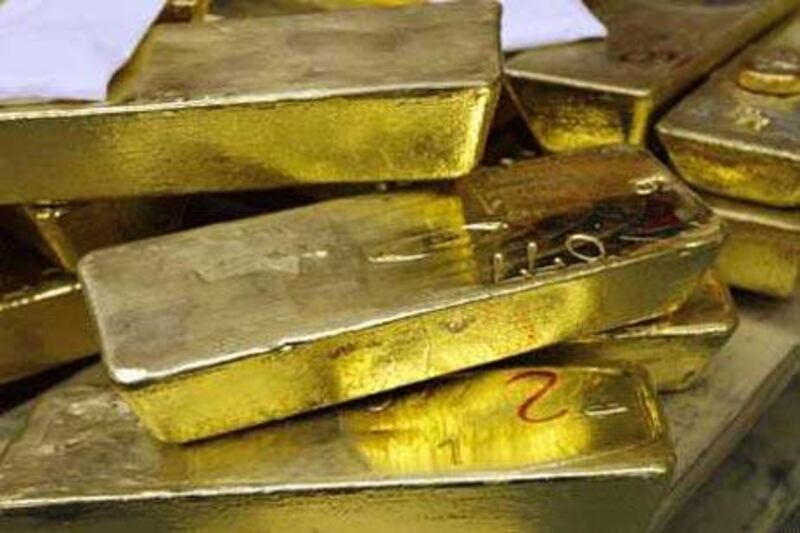Reading the pronouncements of a number of analysts, this year is already mapped out. The US dollar will enjoy a return to stability, the global economy will begin to grow steadily again and there will be no further need for quantitative easing. At a stroke, any rationale for owning gold will disappear: the metal will no longer be needed as a hedge against the greenback, fears over inflation and deflation will be unfounded and monetary authorities the world over will start to raise interest rates.
This devastating combination of factors means the end of investors' short-lived love affair with precious metals and an investment that returned 26.9 per cent last year in dollar terms once more being labelled a "barbarous relic". Incidentally, last year this dinosaur also returned 14.2 per cent against the British pound and a robust 22.9 per cent in euro terms. In effect, markets are free to continue pretty much as they were, now that we have consigned to history the crisis in global markets that witnessed a redrawing of the financial map with the disappearance of Bear Stearns and Lehman Brothers, the consumption of Merrill Lynch by Bank of America and the reputations of a great many institutions being tarnished.
As you may have detected from my tone, I am altogether less convinced that matters are really quite so fixed and quite so simple. Certainly I think it inevitable that a lot of the "fast money" will lose interest in gold over the coming year. Then again, this sort of investor is attracted far more by a chart pattern or the chance of a quick gain than by the underlying investment itself. For this investor it matters not whether it is precious metals that are being traded, or corn, cocoa, copper or currencies. It is simply about liquidity and the chance to make a return.
However, for those institutions and individuals that take a longer-term view, the question is whether the next 12 months will herald the same sort of insouciance. My feeling is they will not. When gold plumbed near 20-year lows back in 1999, markets believed that monetary authorities were omnipotent. Little more than a simple adjustment to interest rates would keep inflation in check and steady growth would continue.
This time, gold has more than quadrupled in value and at its peak last year had risen nearly five-fold. The traumatic events of the past 18 months in particular have seen the standing of many of those bankers greatly reduced, with a perception from some that, far from controlling events, they have been reduced to being mere bystanders with a policy imperative that amounts to little more than the need to avoid deflation.
Even central banks have felt the need to own more gold. Last year, the Reserve Bank of India announced a purchase of 200 tonnes, the central bank of Sri Lanka 10 tonnes and Mauritius 2 tonnes - all from the IMF. Outside of the Indian purchase, the amounts are not significant. Many in the market hoped for Brazil, Russia or China to buy a large quantity of gold from the IMF and were disappointed that gratification was not instantaneous. However, the point is that the nature of the debate has changed. No longer is it about which countries are selling, but about which are the ones adding to their reserves, and while the market may not have got the headlines that it craved, China and Russia - along with others - are continuing to buy gold from domestic production.
Moreover, these are purchases that have been made public. Generally central banks' activities in this market are reasonably easy to determine since those activities normally show up in the banks' submissions to the IMF. What about sovereign wealth funds? Pension funds? Mutual funds? In some cases, they might make an announcement to the press, but they are by no means obliged to, and while some investors might crave the reassurance of a big-name buyer, they might have to settle for somewhat less.
Traditionally jewellery has accounted for some 80 per cent of the demand for gold, with the residual being made up by dentistry and electronics, but with current high prices this has dropped below 50 per cent. The result is that investment demand is now vital to the outlook. Admittedly the distinction between jewellery and investment is somewhat blurred in the Middle East and Asia, but while high prices have suppressed physical demand fall in these markets, this has been offset by increased interest from the West, and nowhere is this more evident than in the rise of exchange-traded funds. The largest of these, SPDR Gold Shares, was originally listed in November 2004, and in the five years since it has managed to accumulate more than 1,100 tonnes of gold, which makes it the sixth-largest holder of gold - behind national holders such as the US, Germany and France but ahead of China.
For gold to flourish this year, what is required is not a series of headline-grabbing announcements, but that a tiny percentage of global savings are put into the market as investors seek to capitalise on the metal's traditional qualities - the most potent of these being a hedge against financial uncertainty. So while the direst consequences of the collapse in global financial confidence have been averted, there will remain a desire for a tangible asset to help guard against shocks to the system, and it is this that will drive gold over the next 12 months.
Jonathan Spall is a director for commodities at Barclays Capital, and is based in London





